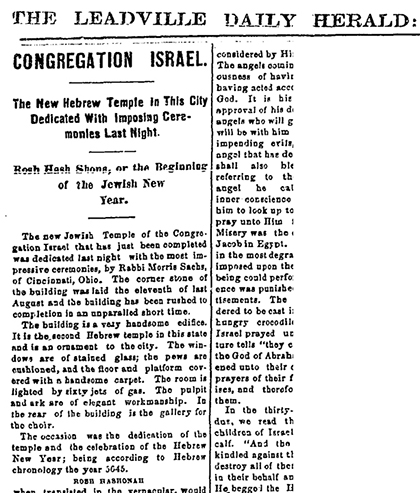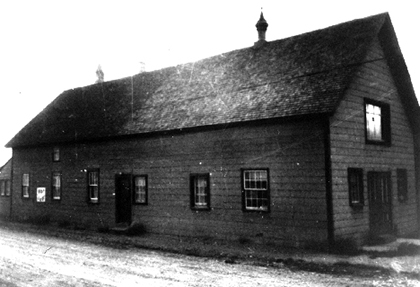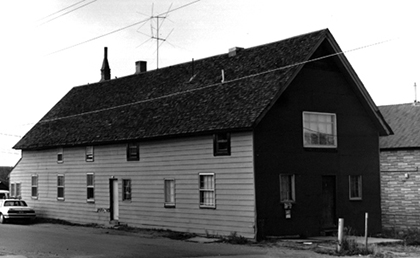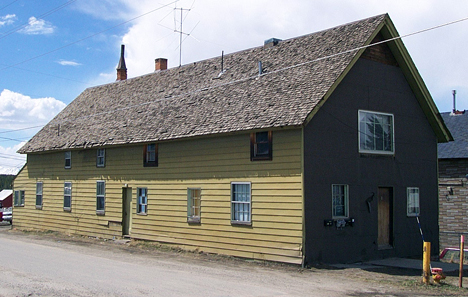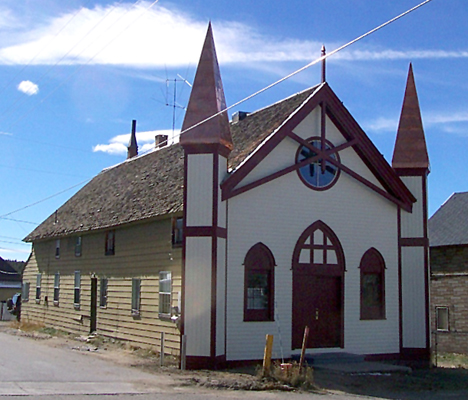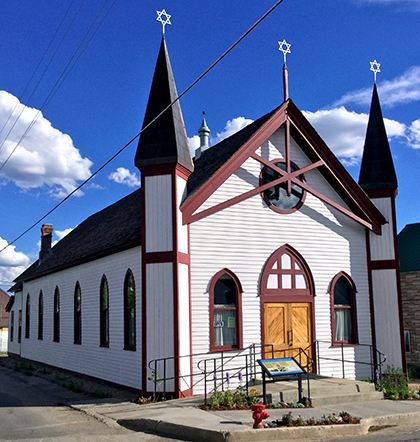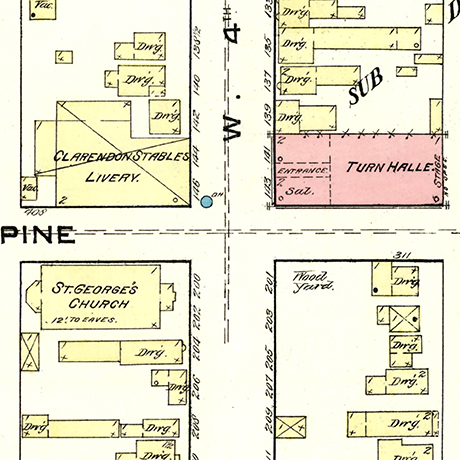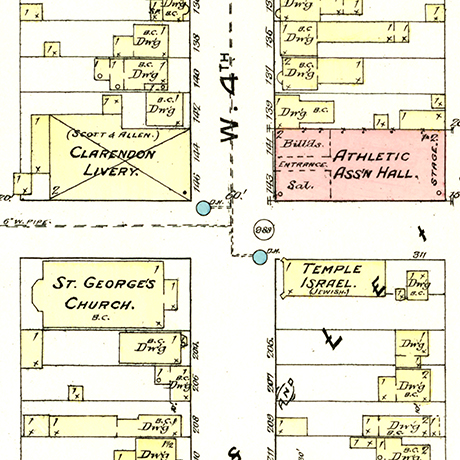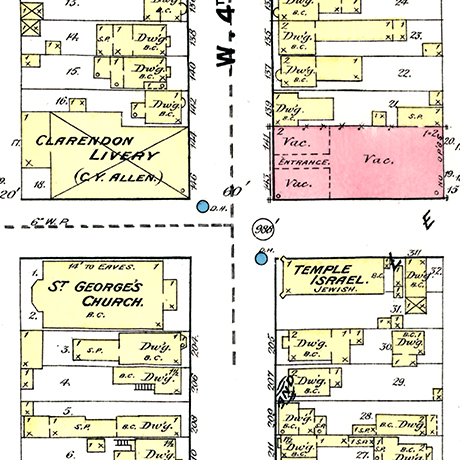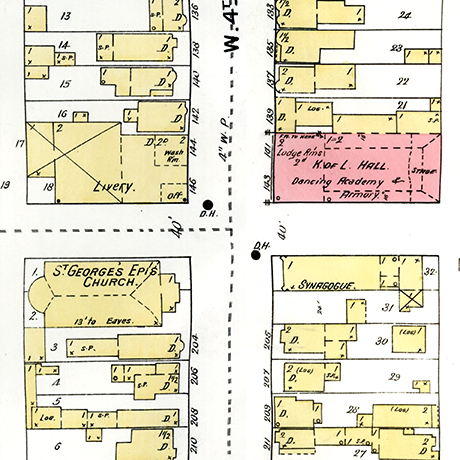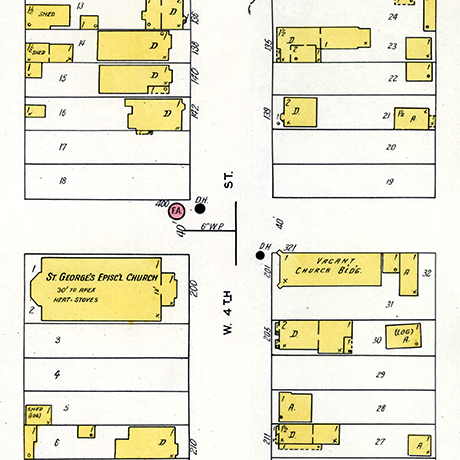A building project was disclosed in the January 15 papers:
The want of a Hebrew temple of worship has been one long felt by the Jewish residents of Leadville, and not only they, but the community of which they are such numbers will be gratified to learn that initiatory steps have been taken for the erection, establishment and permanent maintenance of a temple in this city. Sunday afternoon [January 13] a meeting of leading Jewish citizens was held, which resulted in the organization of a temple association and election of the following officers: President J. H. Monheimer; vice-president, David May; treasurer, Sam Berry; secretary, M. Kahn.
The organization consists of thirty members, and with it is incorporated the Hebrew Ladies Benevolent society, and all other Jewish associations existing prior to yesterday. In fact the entire Hebrew element of the city will unite in the laudable enterprise of establishing an appropriate place of worship.
It is proposed to erect a synagogue of brick and stone, at a cost of $10,000, a suitable site for which will be selected immediately, and work will be begun as soon as weather will permit. The location of the new temple will be as central as possible and will be at least as near to the avenue as a half block.
A committee was also appointed at the meeting to proceed at once with the collection of funds, and tonight at the rooms of Mr. Sol Rice the committee on constitution and bylaws will prosecute their labor. [1]
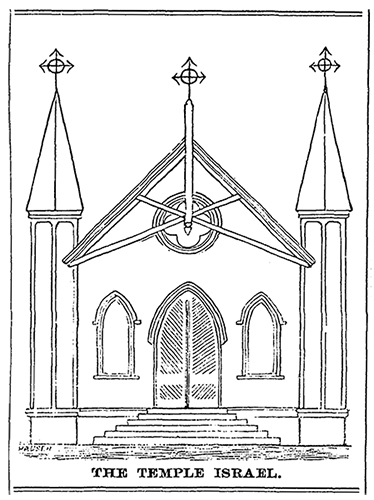
With the Jewish population in Leadville increasing during the first five years of Leadville's existence as a town, the need for a permanent temple building was obvious and great. Therefore, during a meeting on August 7, 1884, "The board of officers of the Jewish congregation met... for the purpose of letting the contract for building the new temple." [2] The land at 201 West 4th Street (the southwest corner of West 4th Street and Pine Street on what was then referred to as Millionaires' Row) in Leadville, Colorado was acquired on July 13th when Horace A.W. Tabor conveyed title to "David May for the benefit of the Congregation Israel" [3] via a quit claim deed "all of Lot (32) Thirty Two and (31) Thirty One on Block (8) Eight of the Stevens & Leiter subdivision to the City of Leadville, State of Colorado" [4]. The nominal price of $1 indicates that the property was a gift from Tabor, whose generosity was legendary and ultimately impecunious. The Temple itself cost $4,000 to erect [5].
"A number of bids were presented and opened, the lowest being that of Mr. Robert Murdoch [6]. The architect will be Mr. George E. King [7]. The following are the specifications of the building: Its dimensions will be 25x70 feet. The audience room will be 24 feet high. The windows will be of stained glass, 7 feet high by 3 1/2 feet wide. There will be a gallery for the choir. The seating capacity of the room will accommodate 250 people. In the rear of the building there will be a platform and pulpit and a handsome ark where the ten commandments will be stored. The building will be lit by 50 gas burners. The pews will be of modern style and handsomely cushioned. There will be a vestibule of seven feet in front which will be nicely carpeted, as will be the entire building throughout. There will be one main aisle leading through the audience room, affording easy entrance to and exit from the pews. The contractor will begin work at once on the edifice, which will be pushed forward until it is completed. The exact day on which it will be completed will be the twelfth of September as nearly as can be ascertained at present. When finished the Temple will be an ornament to that neighborhood, and in fact to the whole city. The building committee consisting of Messrs. Sam Mayer, Dave May, Ike Baer, and M. A. Kahn, are all go-a-head men, and our citizens can depend on their having the edifice completed according to agreement." [8]
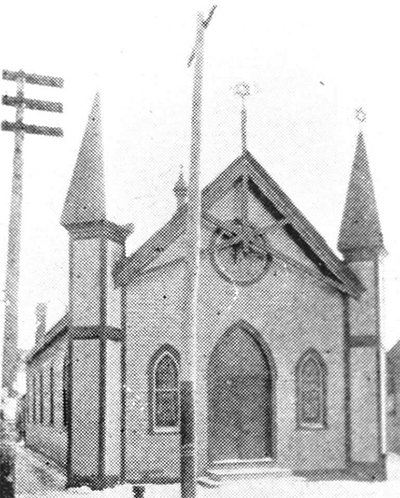
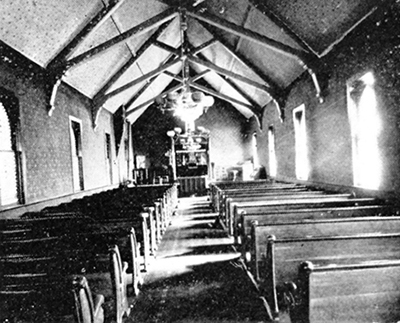
The building was dedicated on September 19, 1884, by Rabbi Morris Sachs of Cincinnati, Ohio, a recent graduate of the Hebrew Union College. One supposes that the event was especially propitious as it coincided with Rosh Hashanah, 5645. Unfortunately, David May, vice-president and chairman of the building committee, was unable to attend the 8 o'clock dedication. In his place Isaac Baer presented the key of the building to J.H. Monheimer, president of the congregation. Mr. Monheimer retaliated with the obligatory few words before releasing the pulpit to Rabbi Sachs [9].
This new house of worship reflected the size and strength of the Jewish community in Leadville. Of a population on the order of 30,000, Jews accounted for nearly 1% or 300 residents during the early 1880s. They supported several organizations in addition to the Temple. Leadville was host to a lodge of the B'nai B'rith (a Hebrew Benevolent Society), a religious school, and required a Jewish cemetery. Jews were with the earliest settlers of the upper Arkansas Valley and while a few actually did work in the mines, stereotypically their presence was mostly felt in the retail trades and as professionals. The stellar performers amongst the Jewish businessmen were the Guggenheim family and David May who went on to establish firms of national importance. Jewish names were also associated with a wide variety of social, philanthropic, and political activities [10].
President Monheimer's report read:
"To the members of the Congregation Israel:
GENTLEMEN In accordance with the duties of my office as president, I beg to offer my annual report. On January 20, 1884, our society was organized and its present officers chosen with the help of God and by the aid of our members, and through the co-operation of the Ladies' Hebrew Benevolent society, we have been enabled to erect our house of worship, which we all had the pleasure of seeing dedicated on New Year's eve, September 19, 1884, and which is an ornament not alone to us as Israelites, but to our city and the world at large. Much credit is due to the members who have acted on the different committees and those who took such great interest in its erection and completion. In consequence of my absence from the city, I could do but little to encourage the work, and therefore feel the more grateful to those who acted in my stead.
It is a pleasure to record during the construction of our temple the hand of providence guided our work and no person was hurt or injured.
Furthermore, I wish to report that the pews of the temple, with the exception of three, were sold to members of the congregation, and the cash realized was $925, which amount has been collected by our brothers, Sonneberg and Rice without any expense to the congregation for their making the collection, and turned over by me this morning to our worthy treasurer.
The Sabbath school has, during the past nine months, improved, and now that their quarters will be more comfortable, we hope their progress will be accordingly advanced. Much praise is due to its management.
Our treasury is not in the condition I would like to see it, yet we have no right to complain. The reports of our secretary and treasurer will show our exact condition, and when the amount deficient is known, I would recommend that a loan be at once taken up sufficient to pay off all indebtedness. Later a ball can be given by the Ladies'Hebrew Benevolent society, and through it enough money raised to bring us out of debt. Of course these are merely suggestions, and are laid before you for your consideration.
Owing to the vast amount of work to complete the temple in time, it was impossible to make our reports more lengthy we therefore close, hoping that our future may be as prosperous as the past, and that all our members may retain their health, so that the good work so nobly commenced will be continued."[11]
The chain of title for the Temple Israel property after the occupation by Congregation Israel is as follows:
- Sam Levin to Steve J. Malin on August 21, 1937, Quit Claim Deed.
- Steve J. Malin to Anna Malin on April 29, 1953, Quit Claim Deed.
- Anna Malin on August 3, 1953, Quiet Title Suit.
- Anna Malin to Steve J. and Anna Malin on October 28, 1953, Warranty Deed.
- Steve J. and Anna Malin to Bishop and (Episcopal) Diocese of Colorado on July 25, 1955, Warranty Deed.
- Bishop and Diocese of Colorado to Sterling L. and Sharon K. Hartwig on April 6, 1966, Warranty Deed.
- Sterling L. and Sharon K. Hartwig to James A. and Betty J. McClellen on August 10, 1971, Installment Land Contract (Warranty Deed followed on December 1, 1978).
- James A. and Betty J. McClellen to Harvey/Martin Construction on December 15, 1980, Warranty Deed.
- Harvey/Martin Construction to Willard H. Copper on February 1, 1985, Quit Claim Deed.
- Willard H. Copper Family Trust to Temple Israel Foundation on October 15, 1992, Warranty Deed. [14]
Whether Mr. Levin held title as a surviving member of the congregation or through some other devise is unclear and apparently the issue was resolved by Mrs. Malin's legal action. In any event, Steve Malin converted the Temple into a single family residence beginning in 1937 [15]. Mr. Malin's daughter, Mae, recalls that her father built two or three rooms in the rear of the Temple for the family to live in while the front was used for the repair of automobile radiators. This use was superseded during the Second World War when the front was converted to living space for boarders from the greatly expanded operations at the local mines [16]. After acquiring the building in 1955, Saint George Episcopal Church (located across the street on 4th Street) used it as a vicarage. The Hartwigs converted it into a three unit apartment house in the 1960s. Harvey/Martin Construction created a fourth unit during its tenure [17] and the structure retained this configuration until 2006.

